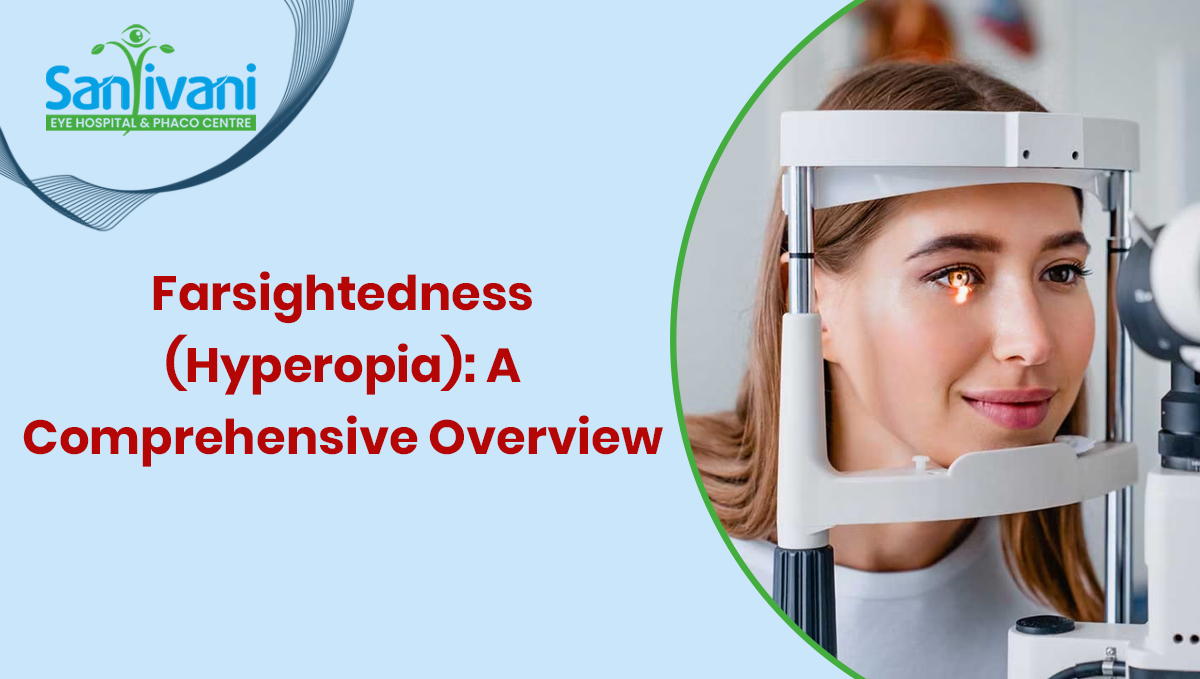
Farsightedness (Hyperopia): A Comprehensive Overview
Farsightedness, medically known as hyperopia, is a common refractive error that affects the eye's ability to focus on nearby objects. Unlike nearsightedness (myopia), where distant objects are blurry, individuals with hyperopia have difficulty seeing objects up close clearly. Understanding the causes, symptoms, diagnosis, and treatment options for hyperopia is essential for those experiencing vision issues.
Causes of Hyperopia:
Hyperopia occurs when the eyeball is too short or the cornea has too little curvature. In such cases, light entering the eye focuses behind the retina instead of directly on it. This results in a blurred image for close-up objects. While genetics can play a role in hyperopia, it can also develop with age as the lens loses its flexibility.
Symptoms:
- 1. Blurred Vision Up Close: The most common symptom of hyperopia is difficulty focusing on close objects, such as reading a book or working on a computer.
- 2. Eye Strain: Individuals with hyperopia may experience eye strain or discomfort, especially during activities that require sustained close-up focus.
- 3. Headaches: Prolonged periods of reading or other close-up tasks can lead to headaches, which may be a result of the extra effort the eyes exert to focus.
- 4. Eye Fatigue: Hyperopic individuals may feel fatigued or tired after engaging in tasks that demand close vision for extended periods.
Diagnosis:
An eye care professional can diagnose hyperopia through a comprehensive eye examination. This typically includes a visual acuity test to measure how well you can see at different distances, a refraction test to determine the eyeglass prescription needed, and a slit-lamp examination to evaluate the overall health of the eyes.
Treatment Options:
- 1. Prescription Eyeglasses: Corrective lenses, in the form of eyeglasses, are the most common and effective way to manage hyperopia. Convex lenses are prescribed to converge light rays directly onto the retina, compensating for the eye's inability to do so naturally.
- 2. Contact Lenses: For those who prefer an alternative to eyeglasses, contact lenses can be prescribed to correct hyperopia. They offer clear vision without the need for visible eyeglasses.
- 3. Refractive Surgery: In some cases, individuals may opt for refractive surgery to reshape the cornea, correcting hyperopia. Common surgical procedures include LASIK (Laser-Assisted In Situ Keratomileusis) and PRK (Photorefractive Keratectomy).
Prevention:
While hyperopia is often influenced by genetic factors, certain lifestyle practices can contribute to eye health and potentially minimize the progression of hyperopia:
- 1. Regular Eye Examinations: Routine eye exams can detect refractive errors early, allowing for timely correction.
- 2. Eye-Friendly Work Environment: Create a work environment that reduces eye strain, such as proper lighting and regular breaks during prolonged close-up tasks.
- 3. Healthy Lifestyle: Maintain a healthy lifestyle with a balanced diet, regular exercise, and proper hydration, as these factors contribute to overall eye health.
- 4. Protective Eyewear: When engaging in activities that pose a risk to eye health, such as sports or working with tools, wearing protective eyewear can prevent injuries and potentially impact refractive errors.
In conclusion, hyperopia is a common vision condition that can be effectively managed with eyeglasses, contact lenses, or refractive surgery. Regular eye check-ups are essential for early detection and appropriate corrective measures. Individuals experiencing symptoms of hyperopia should consult with an eye care professional to determine the most suitable treatment for their specific needs, ensuring clear and comfortable vision at all distances.